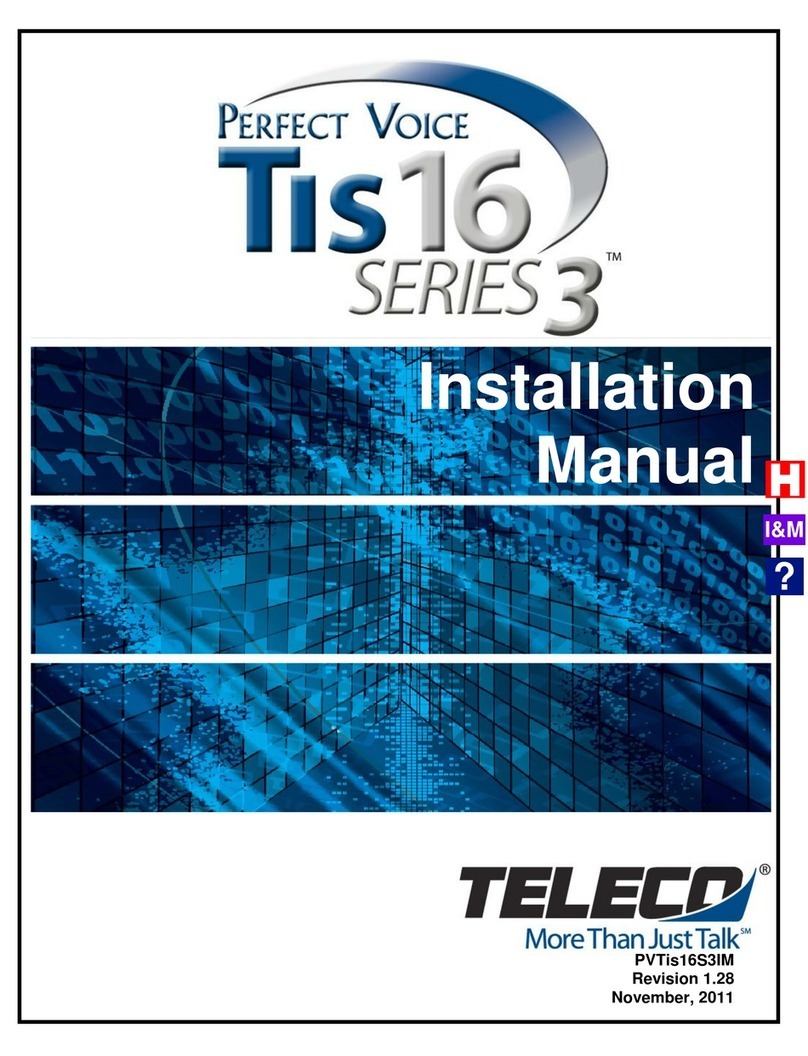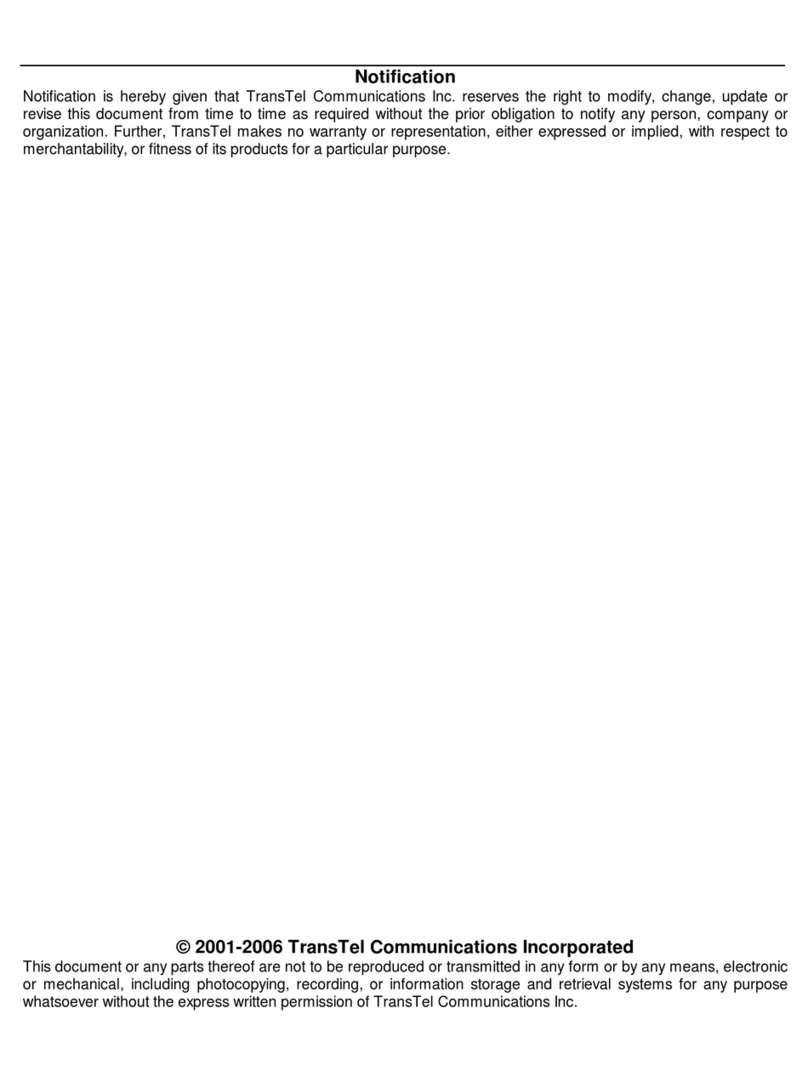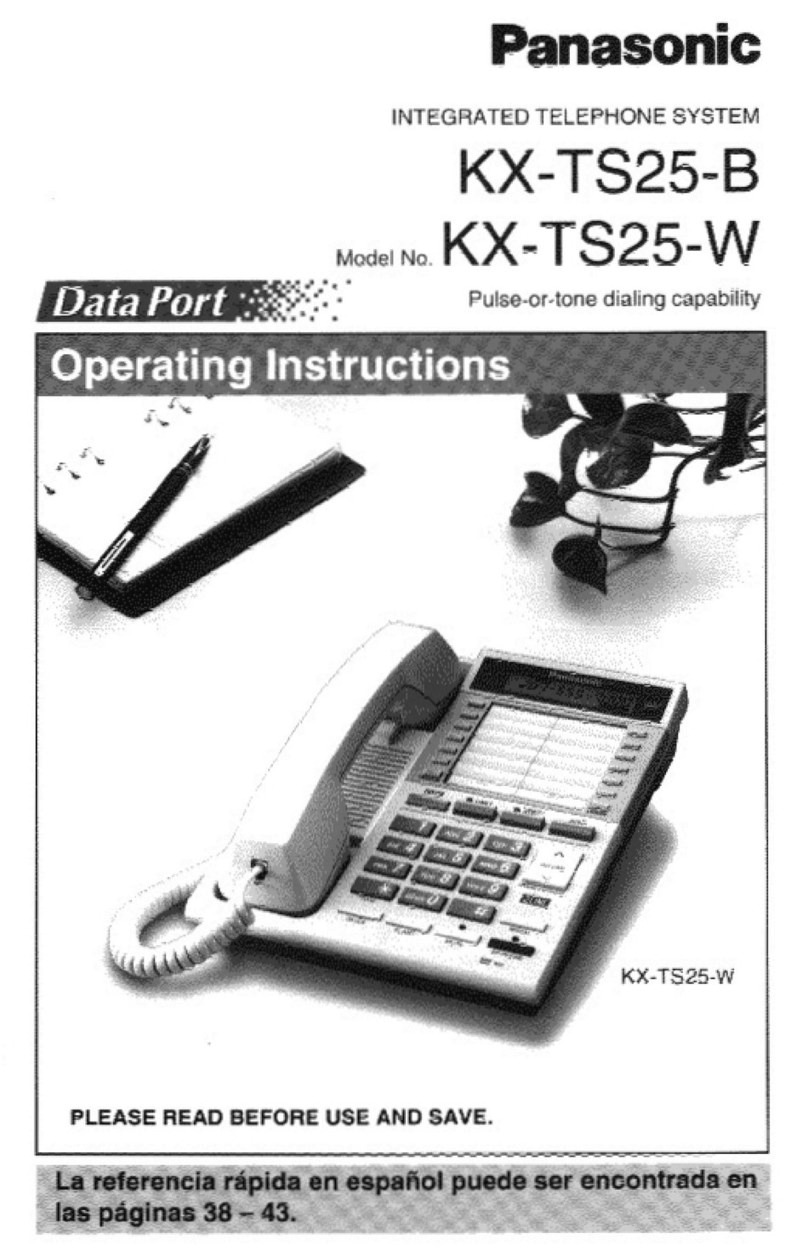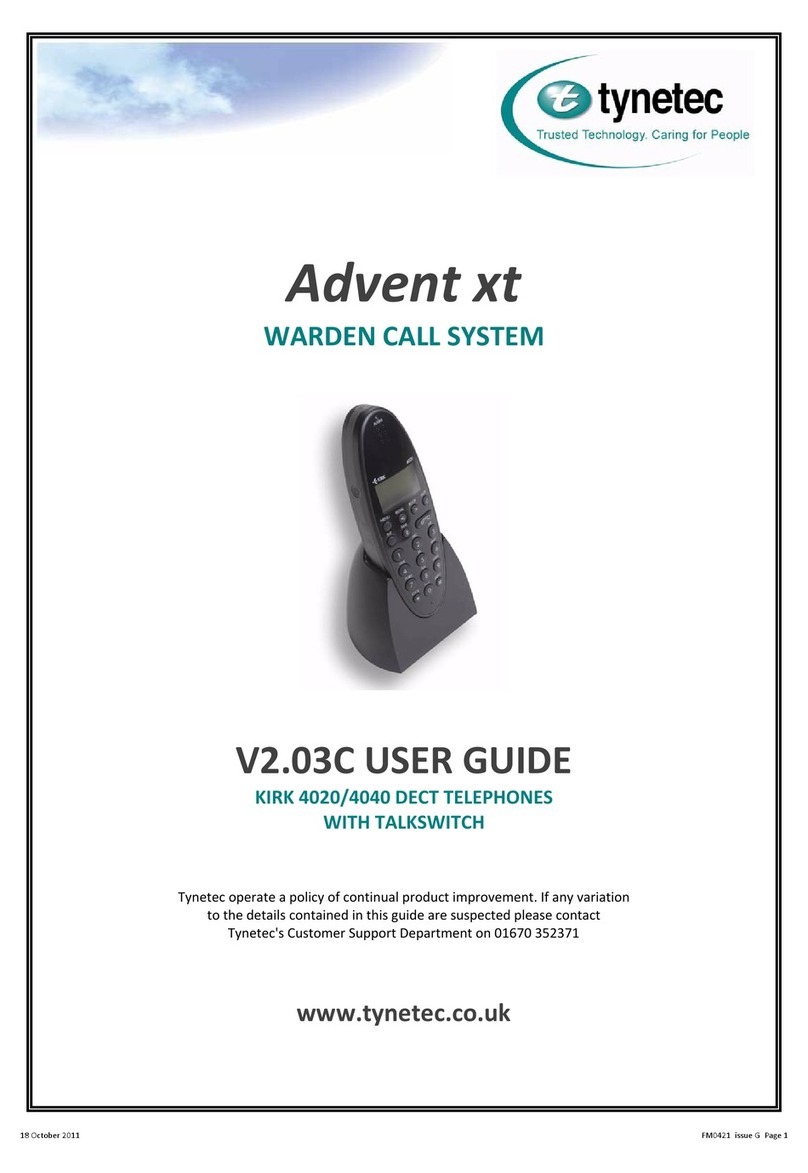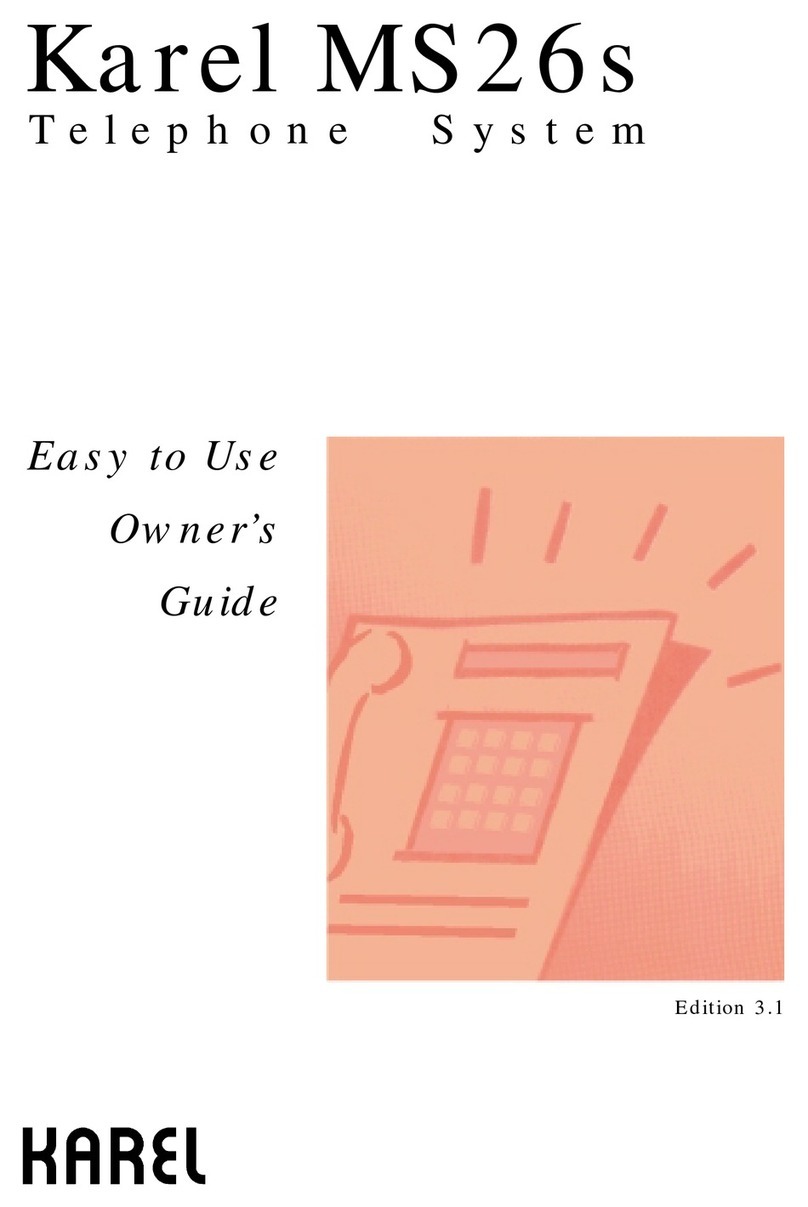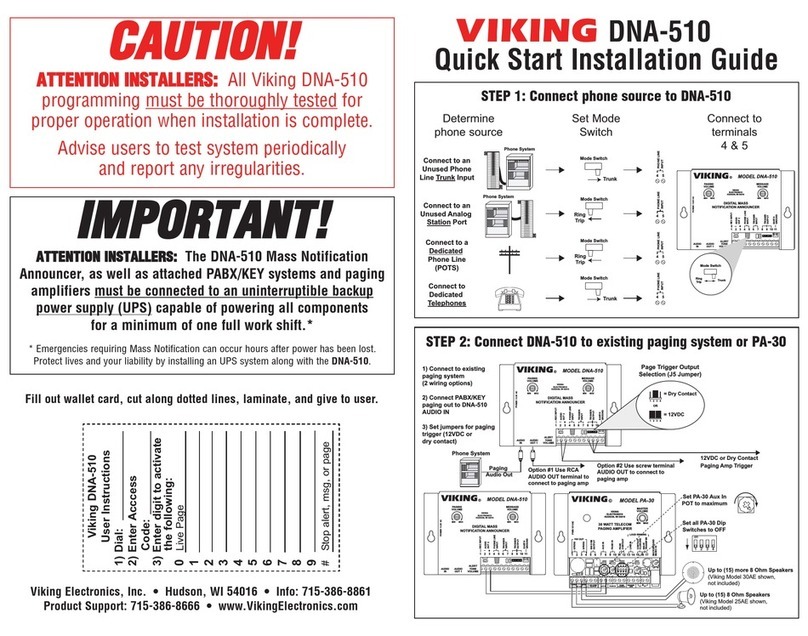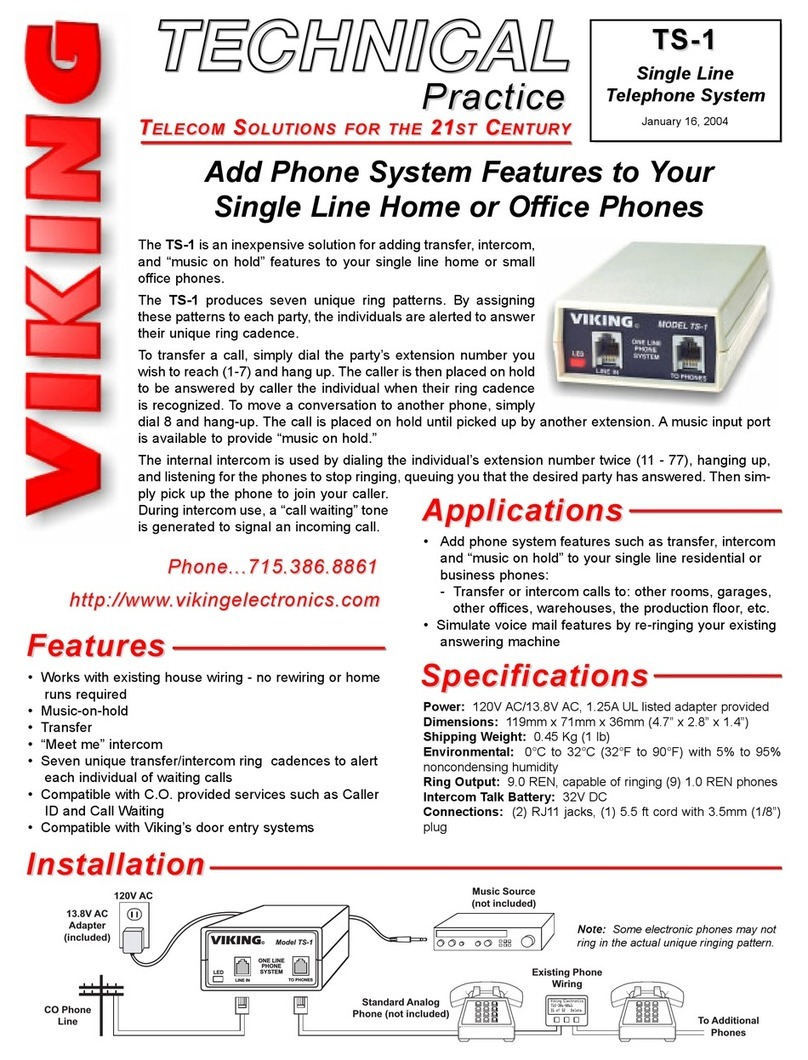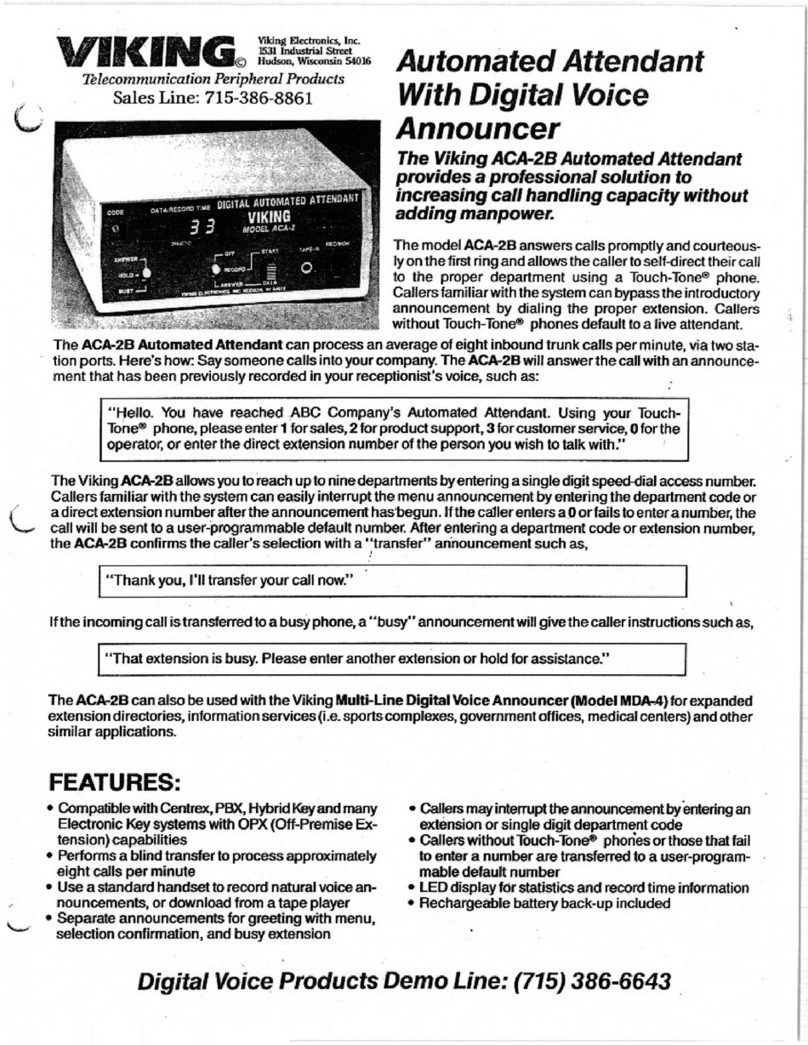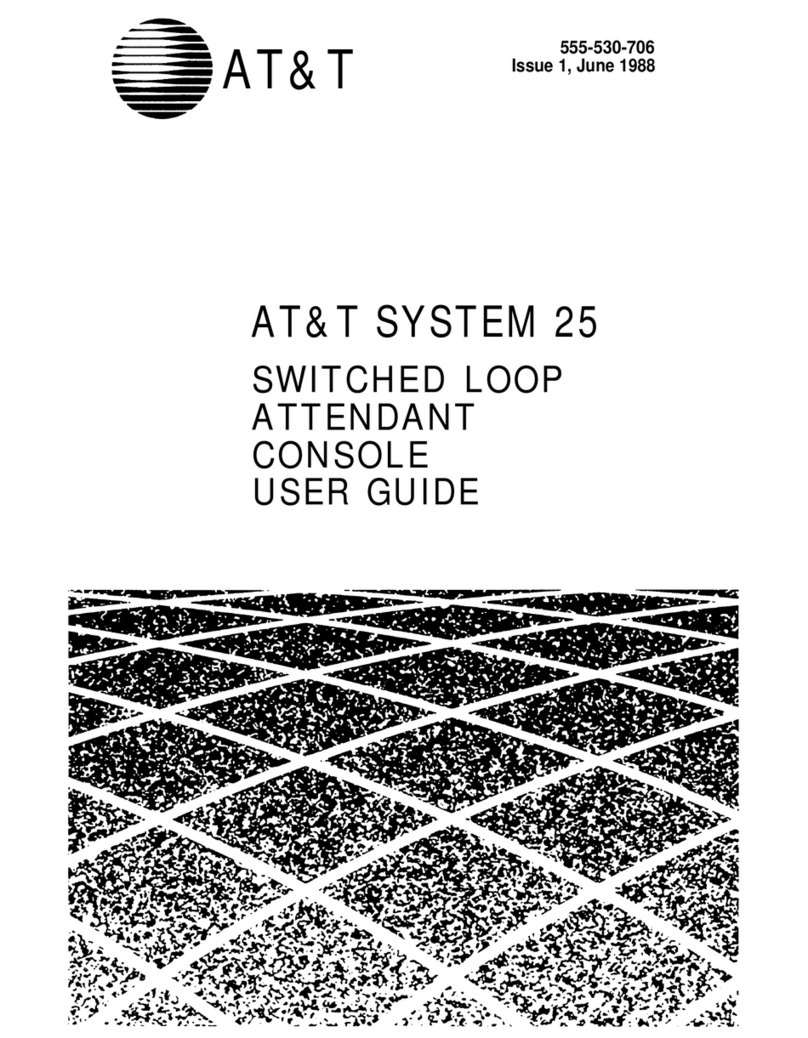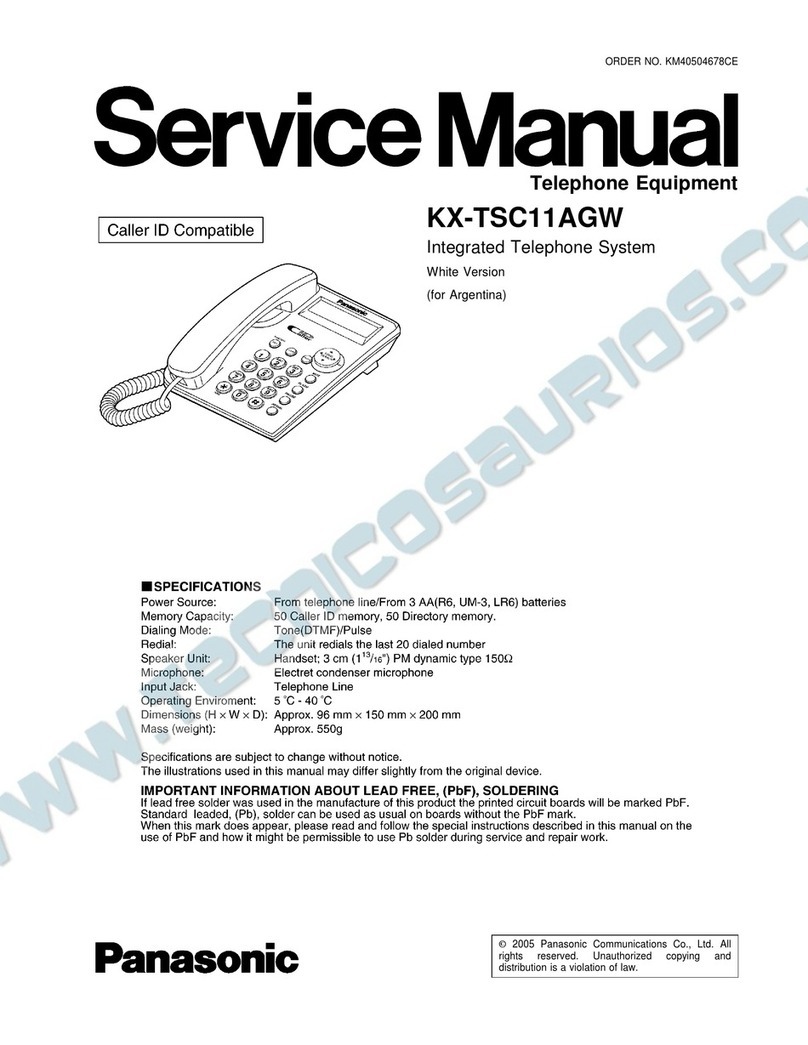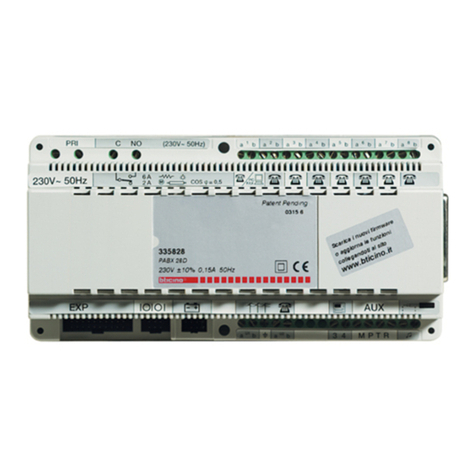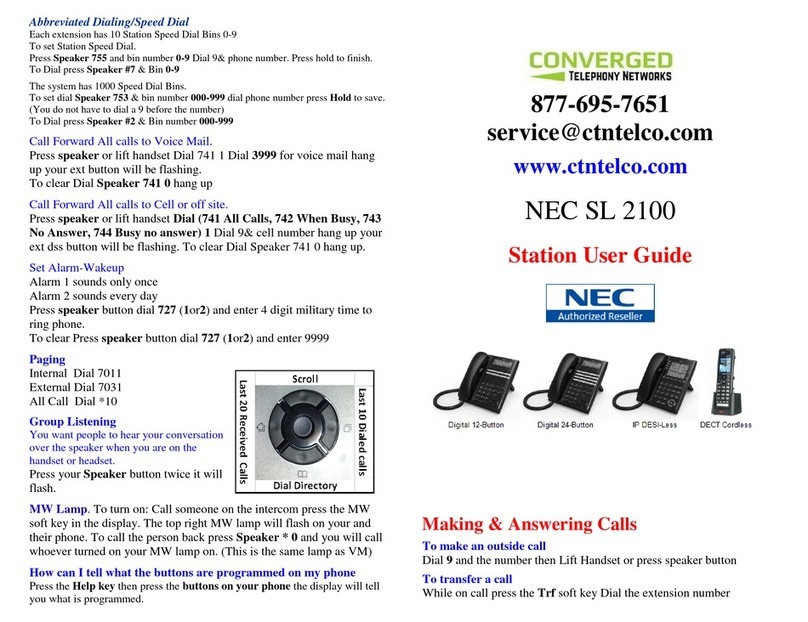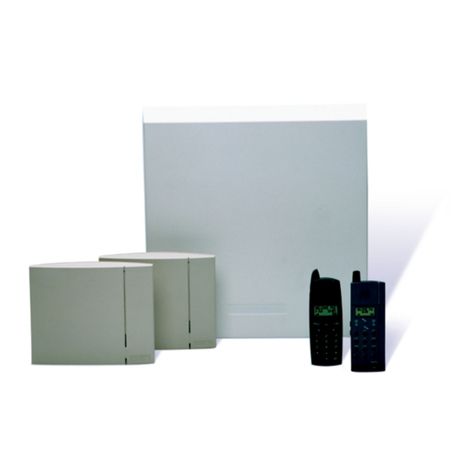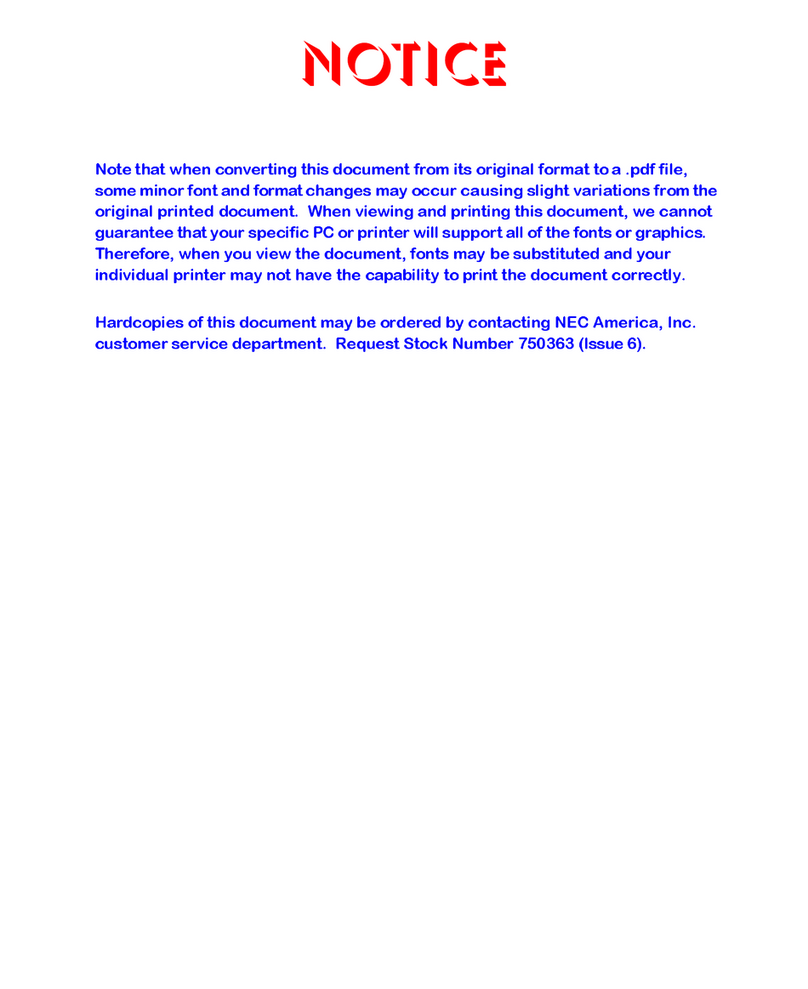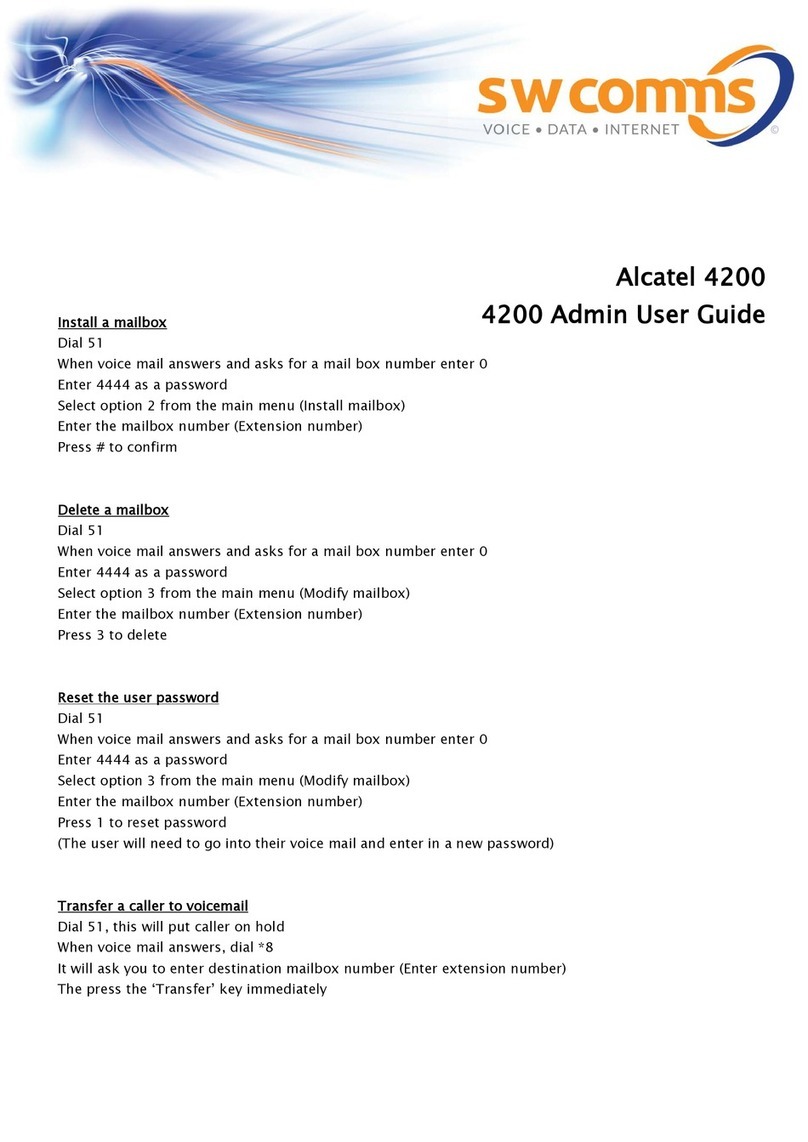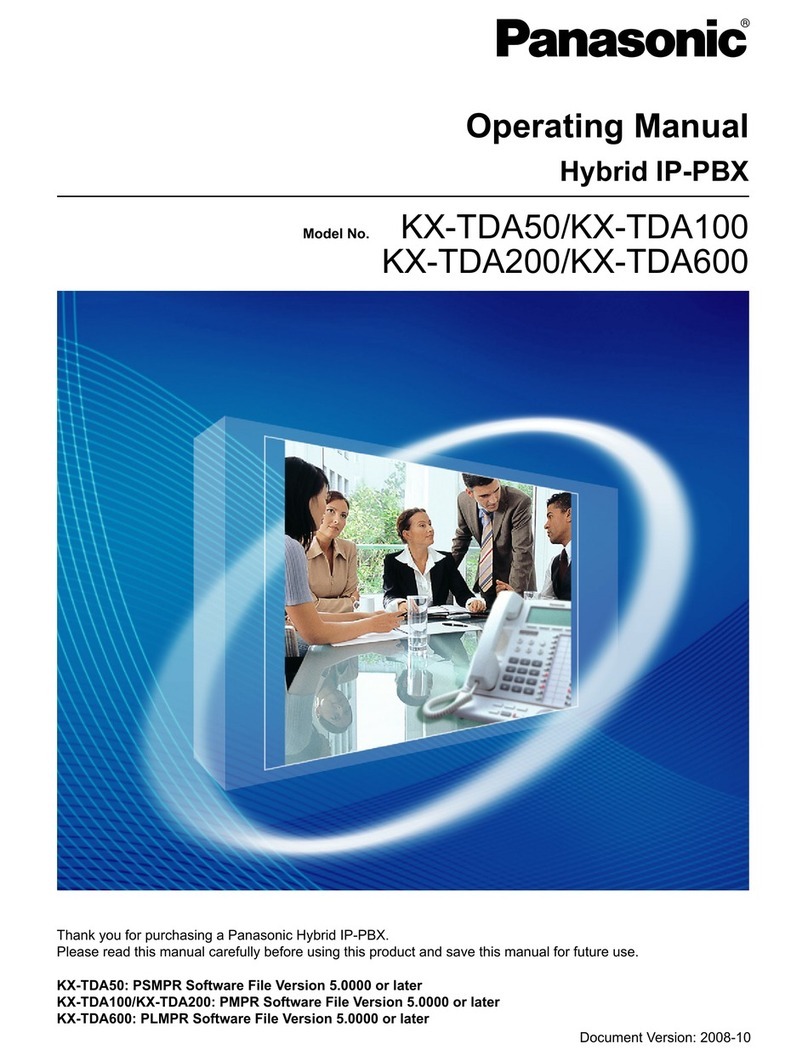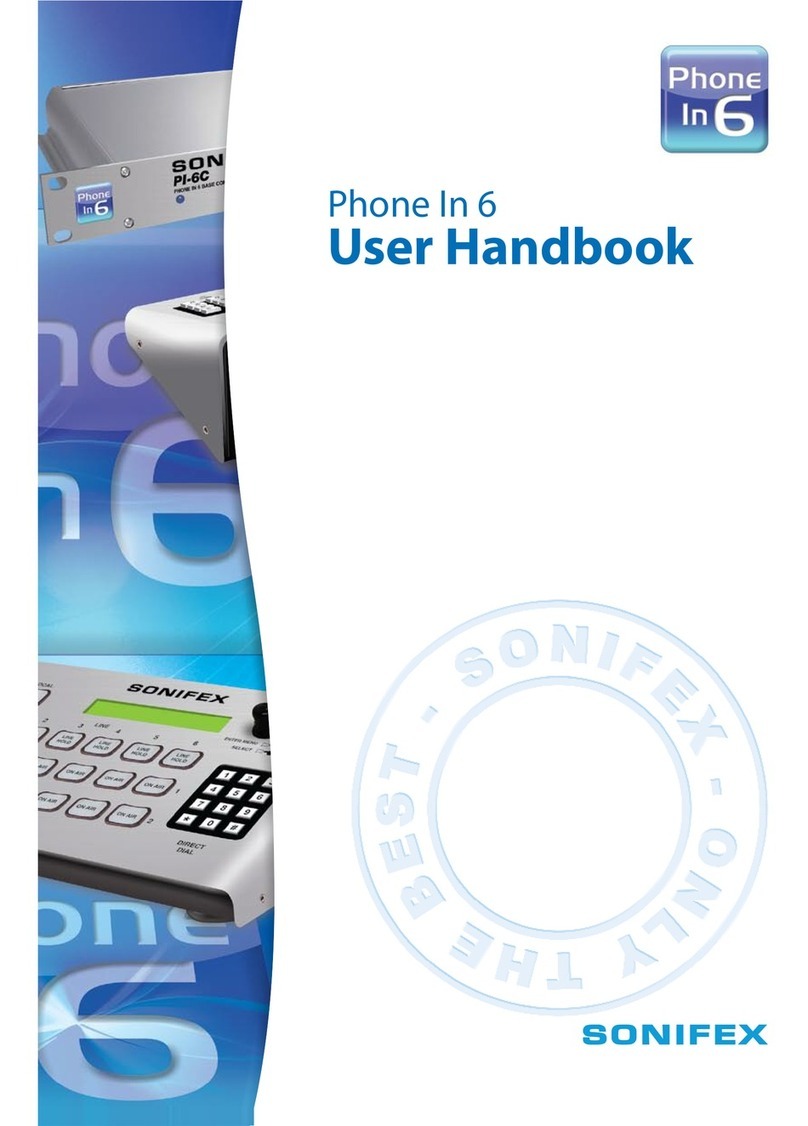Due to the dynamic nature of the product design, the information contained in this document is subject to change without notice. Viking Electronics, and its affiliates and/or subsidiaries assume no respon-
sibility for errors and omissions contained in this information. Revisions of this document or new editions of it may be issued to incorporate such changes.
Fax Back Doc 085
ZF301580 Rev C
Printed in the U.S.A.
8.
3. Programming
Programming of the ACD-10 remains unchanged with the addition of the ACD-10-EB except for the “Transfer Only” feature
switches available on the ACD-10-EB board when the ACD10 V1.4 software chip is installed. Turn the switch ON to activate
the “Transfer Only” feature for the associated station as shown in the diagram on the previous page.
2. Station Activation
To Activate Stations 16 - 19...
Step 1. Come off-hook on the station you wish to activate.
Step 2. Dial “682” and hang up.
Step 3. Repeat steps 1 and 2 for each station you wish to activate.
The LM-24D will display the mode in which the ACD-10 is operating in. Also, ring-
ing lines or lines on hold waiting for an agent appear as a fast flashing lamp. Calls
on hold longer than the programmable hold alarm time will flash and warble. Once
a call is answered by an agent, it will appear as a solid line lamp.
Stations never put into service (made available) from system power-up will stay dark.
Stations that are in-use or ringing are displayed as a solid lamp. Stations made
unavailable will appear as a lamp that winks off every few seconds. Note: See the
diagram at the right for display layout.
B. Optional LM-24D Display
4. Operation
The addition of the ACD-10-EB board allows the ACD-10 to be expanded from 6 to 10 stations, bringing into service stations
16, 17, 18 and 19. Normal operation of the ACD-10 remains unchanged. If the “Transfer Only” switch is ON and the ACD10
V1.4 chip is installed, the associated station (when activated) allows only transferred calls to ring through. These can be in the
form of blind transfers, supervised transfers, intercom calls, conference calls and camp-on call transfers. Since having the
switch ON prevents incoming calls from ringing through, that station can be used as a tie-line to transfer calls to another phone
system, or be used by manager, billing agents or any other personnel that should not get inbound calls, but is available to receive
calls transferred from any agent. Note: The “Transfer Only” station feature is not available in the ring group protocol.
?Need More Information on the LM-24D?
Call (715) 386-4345 and select 670.
1. Installation
Step 1. Power down the ACD-10.
Step 2. Remove the ACD-10 cover using the supplied 3/32” hex key.
Step 3. Replace existing software chip with the ACD10 V1.4 chip if the “Transfer Only” feature is needed as shown on the previous page.
Step 4. Snap the ACD-10-EB into place as shown in the diagram on the previous page.
Step 5. Secure the ACD-10-EB board with the supplied 4 x 40 ¼” screws.
Step 6. Carefully plug the two ribbon cable connectors into the J2 and J11 pins as shown in the diagram on the previous page.
Step 7. Set DIP switches to ON to activate “Transfer Only” station feature if needed.
Step 8. Replace the cover on the ACD-10 and power the unit on.
IF YOU HAVE A PROBLEM WITH AVIKING PRODUCT, PLEASE CONTACT: VIKING TECHNICAL SUPPORT AT (715) 386-8666
Our Technical Support Department is available for assistance Monday 8am - 4pm andTuesday toThursday 8am - 5pm central time. So that we can give you better service, before you call please:
1. Know the model number, the serial number and what software version you have (see serial label).
2. Have your Technical Practice in front of you.
3. It is best if you are on site.
WARRANTY
Viking warrants its products to be free from defects in the workmanship or materials, under normal use and service, for a period of one year from the date of purchase from any authorized Viking distributor or 18 months from the date manu-
factured, which ever is greater. If at any time during the warranty period, the product is deemed defective or malfunctions, return the product to Viking Electronics, Inc., 1531 Industrial Street, Hudson, WI., 54016. Customer must contact Viking's
Technical Support Department at 715-386-8666 to obtain a ReturnAuthorization (R.A.) number.
This warranty does not cover any damage to the product due to lightning, over voltage, under voltage, accident, misuse, abuse, negligence or any damage caused by use of the product by the purchaser or others.
Vikings sole responsibility shall be to repair or replace (at Viking's option) the material within the terms stated above. VIKING SHALL NOT BE LIABLE FOR ANY LOSS OR DAMAGE OF ANY KIND INCLUDING INCIDENTAL OR CONSE-
QUENTIAL DAMAGES RESULTING DIRECTLY OR INDIRECTLY FROM ANY BREACH OF ANY WARRANTY EXPRESSED OR IMPLIED, OR FORANY OTHER FAILURE OF THIS PRODUCT. Some states do not allow the exclusion or limi-
tation of incidental or consequential damages, so this limitation may not apply to you.
THIS WARRANTY IS IN LIEU OF ALL OTHER WARRANTIES, EXPRESSED OR IMPLIED, INCLUDING THE WARRANTIES OF MERCHANTABILITY AND FITNESS FORA PARTICULAR PURPOSE, WHICH ARE HEREBY EXCLUDED
BEYOND THE ONE YEAR DURATION OF THIS WARRANTY. Some states do not allow limitation on how long an implied warranty lasts, so the above limitation may not apply to you.
RETURNING PRODUCT FOR EXCHANGE
The following procedure is for equipment that has failed out-of-box (within 10 days of purchase):
1. Customer must contact Viking’sTechnical Support at 715-386-8666 to determine possible causes for the problem. The
customer MUST be able to step through recommended tests for diagnosis.
2. If the Technical Support Product Specialist determines that the equipment is defective based on the customer's input
and troubleshooting, a ReturnAuthorization (R.A.) number will be issued. This number is valid for fourteen (14)
calendar days from the date of issue.
3. After obtaining the R.A. number, return the approved equipment to your distributor, referencing the R.A. number. Your
distributor will then replace the product over the counter at no charge. The distributor will then return the product to
Viking using the same R.A. number.
4. The distributor will NOT exchange this product without first obtaining the R.A. number from you. If you haven't
followed the steps listed in 1, 2 and 3, be aware that you will have to pay a restocking charge.
RETURNING PRODUCT FOR REPAIR
The following procedure is for equipment that needs repair:
1. Customer must contact Viking's Technical Support Department at 715-386-8666 to obtain a Return Authorization (RA)
number. The customer MUST have a complete description of the problem, with all pertinent information regarding the
defect, such as options set, conditions, symptoms, methods to duplicate problem, frequency of failure, etc.
2. Packing: Return equipment in original box or in proper packing so that damage will not occur while in transit. Static
sensitive equipment such as a circuit board should be in an anti-static bag, sandwiched between foam and individual-
ly boxed.All equipment should be wrapped to avoid packing material lodging in or sticking to the equipment. Include
ALL parts of the equipment. C.O.D. or freight collect shipments cannot be accepted. Ship cartons prepaid to:
Viking Electronics, 1531 Industrial Street, Hudson, WI 54016
3. Return shipping address: Be sure to include your return shipping address inside the box. We cannot ship to a PO Box.
4. RAnumber on carton: In large printing, write the R.A. number on the outside of each carton being returned.
